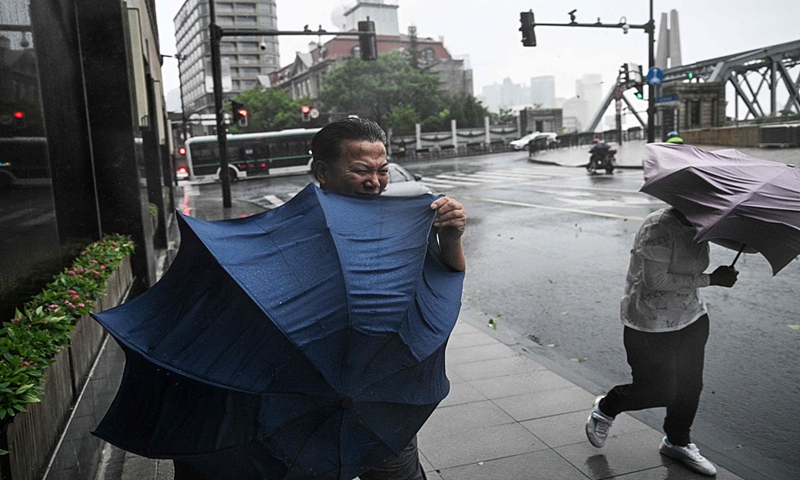China’s coastal areas to face one or two more typhoons before National Day holidays
New storm approaches as Bebinca moves inland

Pedestrians struggle with their umbrellas amid strong winds and rain from the passage of Typhoon Bebinca in Shanghai on September 16, 2024. Photo: VCG
Typhoon Bebinca, the strongest typhoon to slam Shanghai since 1949, flooded roads, uprooted trees, knocked out power to some homes and injured at least one person before it weakened while moving inland.Meanwhile, Typhoon Pulasan is predicted to move through the coastal areas over the next couple of days, taking a similar route as Bebinca.
As Typhoon Bebinca left Shanghai, the city has gradually resumed its normal operation as of Tuesday with power supply to affected areas resumed, metro lines reopened and the Yangshan Port also gradually resuming operations.
Due to the impact of Typhoon Bebinca and its residual circulation, areas in East China's Jiangsu, Anhui and Shandong provinces, as well as Central China's Henan Province are medium to high disaster risk areas. Heavy rainfall will be expected in regions including the middle part of North China's Inner Mongolia Autonomous Region and northern part of Hebei Province, where precautions against secondary disasters and urban and rural waterlogging were taken, China's National Meteorological Center (NMC) forecast on Tuesday.
According to NMC, Typhoon Pulasan may have a similar movement route as Typhoon Bebinca and will affect Jiangsu, Zhejiang and Shanghai. Due to the impact of a cold front, the precise movement of Pulasan will be very difficult to predict.
During the next 10 days leading up to the National Day holidays, one or two more typhoons are expected to form in the South China Sea and the Northwest Pacific Ocean, with one potentially affecting the southeastern coastal regions of China, according to weather.com.cn.
According to Ma Jun, director of the Beijing-based Institute of Public and Environmental Affairs, fewer typhoons made landfall in the Chinese mainland this summer than usual. However, there were more in autumn and the power of the typhoons have intensified especially for Super Typhoon Yagi and Bebinca which had a huge impact on major cities such as Haikou in South China's Hainan Province and Shanghai.
From a long-term perspective, there is an increasing frequency and intensifying trend of typhoons in recent years, Ma told the Global Times on Tuesday.
Ma attributed the trend to the rising global temperature which results in the rising temperature of sea water and eventually increases the energy of the typhoons. In response to the impact of Typhoon Pulasan, coastal areas of Zhejiang and Fujian provinces have initiated emergency responses.

